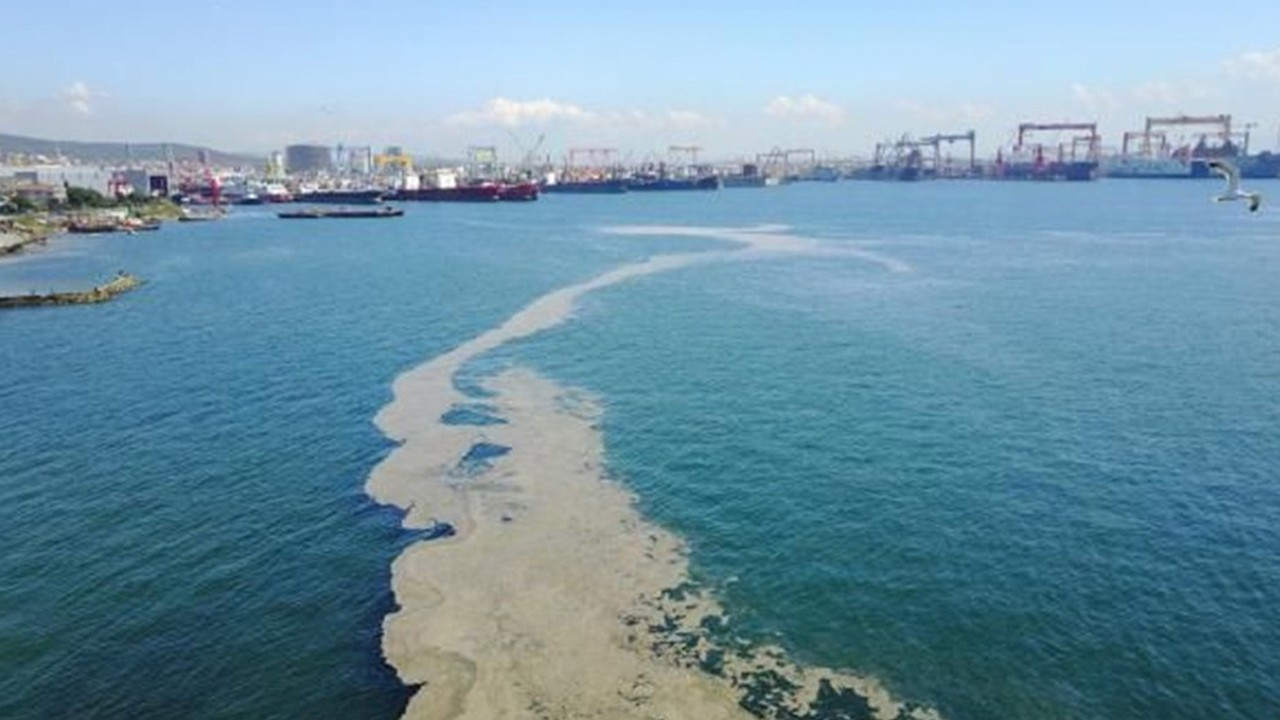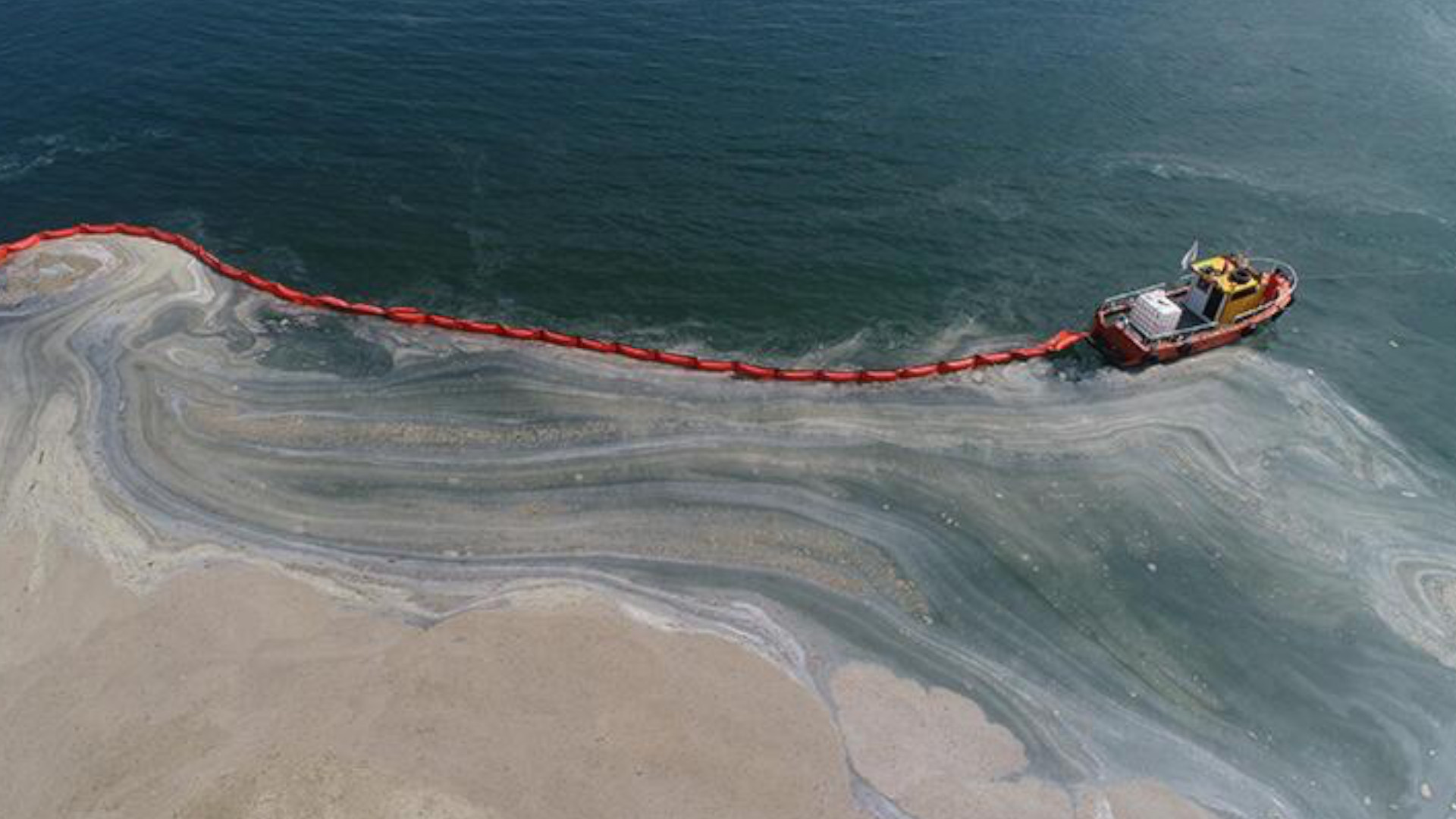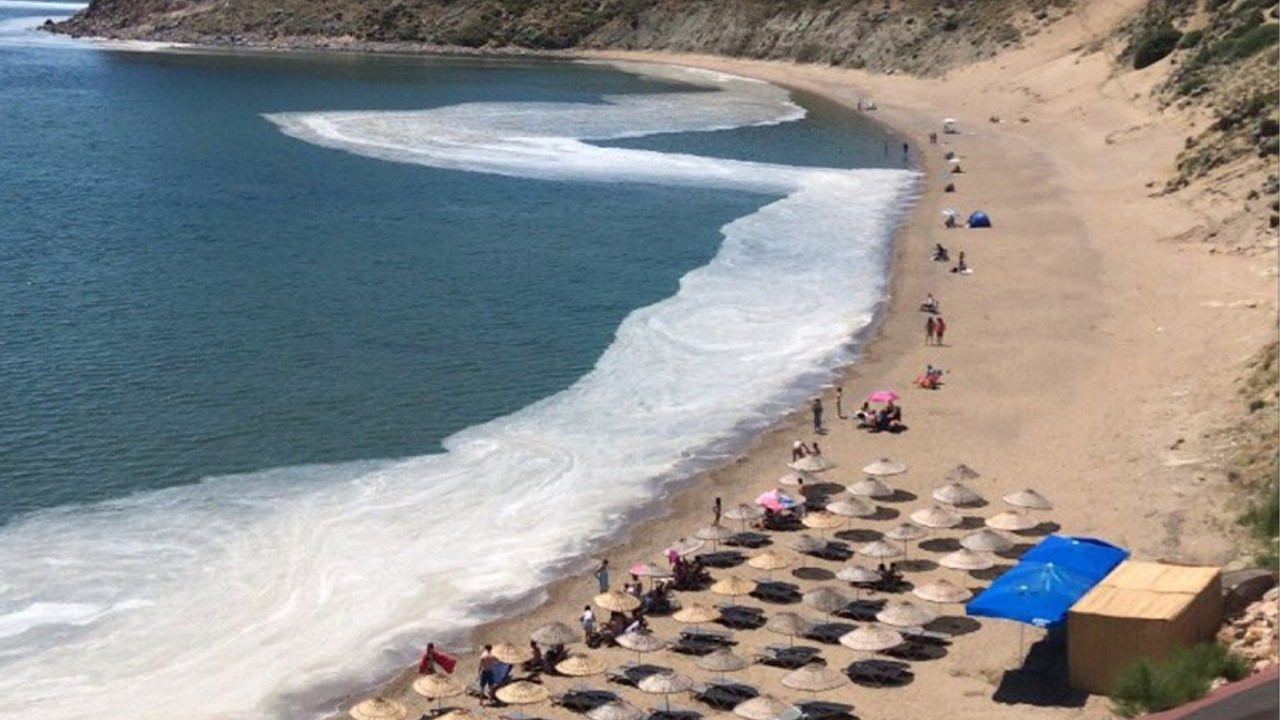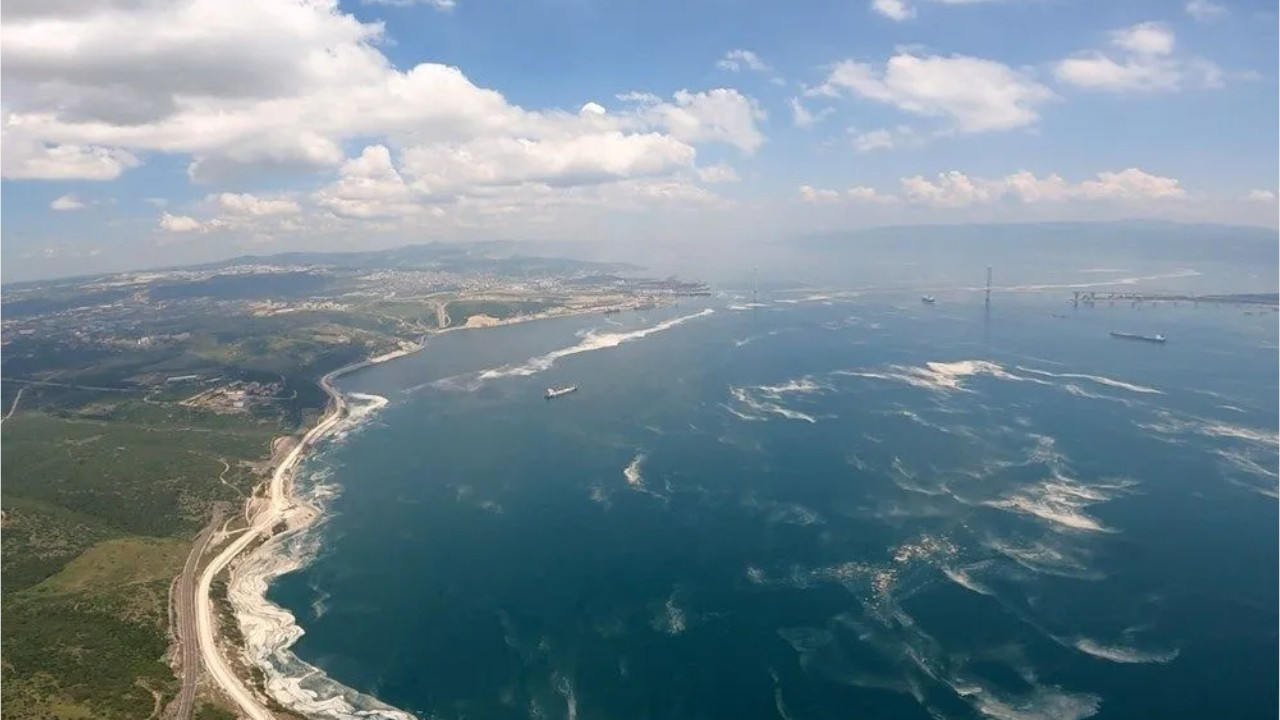If ‘sea snot’ continues, Aegean and Black Seas at great risk: Monitoring group
According to a report published by the Marmara Environmental Monitoring Project (MAREM), the risk of ‘sea snot’ in the Marmara Sea is worsening. If the pollution continues to choke the Marmara, it could put the Black and Aegean Seas at risk, they said.
Aynur Tekin / DUVAR
According to a new report published by the Marmara Environmental Monitoring Project (MAREM), established by the Sevinç and Erdal İnönü Foundation, ‘sea snot’ choking the Marmara Sea near Istanbul has brought the body of water to a breaking point. They are sounding the alarm, warning that if the problem is not addressed, the ‘snot’ could begin to threaten Turkey’s Black and Aegean Seas, as well.
Record amounts of ‘sea snot’ were recorded in the Marmara sea earlier this summer, the product of algae overloaded with water pollutants and warming waters. The problem began in late 2020, and worsened significantly in 2021.
The ‘snot’ chokes the sea, depriving sea creatures and plant life of oxygen critical to their survival. Rapid urbanization in Istanbul and its environs, as well as poorly regulated industrial waste on Istanbul’s shorelines, has contributed to the rise of the ‘snot,’ and the problem shows no signs of abating. The issue in the region - known as the “Ergene River Basin” - has only worsened in recent months, despite lesser media attention.
According to MAREM’s latest report, entitled “The Status of Mass Mucilage Formation and its Effects on the Marmara Sea Ecosystem,” there have been significant changes in the Marmara’s oxygen levels, pH levels, color, and constitutive nutrients as a result of the ‘snot.’ Particularly in the central Marmara Sea region, these critical indicators fell below the levels necessary to maintain marine life. Some regions have become nearly “oxygen-free zones,” meaning no living thing is able to survive there.
According to MAREM lead, hydrobiologist M. Levent Artüz, biodiversity has decreased significantly in the Marmara Sea since the ‘sea snot’ issue began in late 2020. The issue first became noticeable with mass fish deaths in the Western Marmara in early 2021, which then moved eastwards towards Istanbul and still continues. Since 1989, Artüz said, pollution has continuously threatened the sea and has led to the disappearance of those species that could not survive the pollution.
“In this process where the diversity of species deteriorated, the amount of those species that could withstand the pollution also increased. This is why we have seen the color of the Marmara change to red and green, the sea being invaded by jellyfish, the disappearance of commercially important fish, and campaigns to increase locally significant fish populations,” said Artüz.
If the ‘sea snot’ continues to proliferate, the process of biodiversity degradation that has occurred over the last century will only continue, he further said.
“In a book published in 1915 by the then-head of fisheries, Karekin Deveciyan Efendi, he mentions 124 species of commercially important fish in this region,” said Artüz. “As of today, the names of these fish aren’t even recognizable, let alone commercially important […] The situation is beyond dire.”
In June, the Ministry of Environment and Urbanization announced a 22-point action plan to combat ‘sea snot,’ which was hailed by experts, including Artüz. However, Artüz said that much more than a plan is needed - action needs to be taken, and so far he’s seen no legal regulations to curb pollution implemented.
“We urgently need action,” Artüz said. “We continue to pollute every day, as is evidenced by the Ergene discharge.”
He said that if this pollution in the Ergene River basin continues, the Black Sea will soon be as polluted and choked with ‘snot’ as the Marmara, and Turkey’s prized Aegean coast will soon follow.
“If this process continues, we will lose the Black Sea, like the Marmara, very, very soon,” he said. “We will also put the Aegean Sea, starting from its North, at great risk.”

 ‘Marmara is ablaze’ with crimeWorld
‘Marmara is ablaze’ with crimeWorld Marmara's sea snot to pose an international problemWorld
Marmara's sea snot to pose an international problemWorld Marine mucilage plaguing Marmara Sea getting closer to Aegean beachesEnvironment
Marine mucilage plaguing Marmara Sea getting closer to Aegean beachesEnvironment 'Sea snot' outbreak in Marmara Sea doubles in size in five daysDomestic
'Sea snot' outbreak in Marmara Sea doubles in size in five daysDomestic